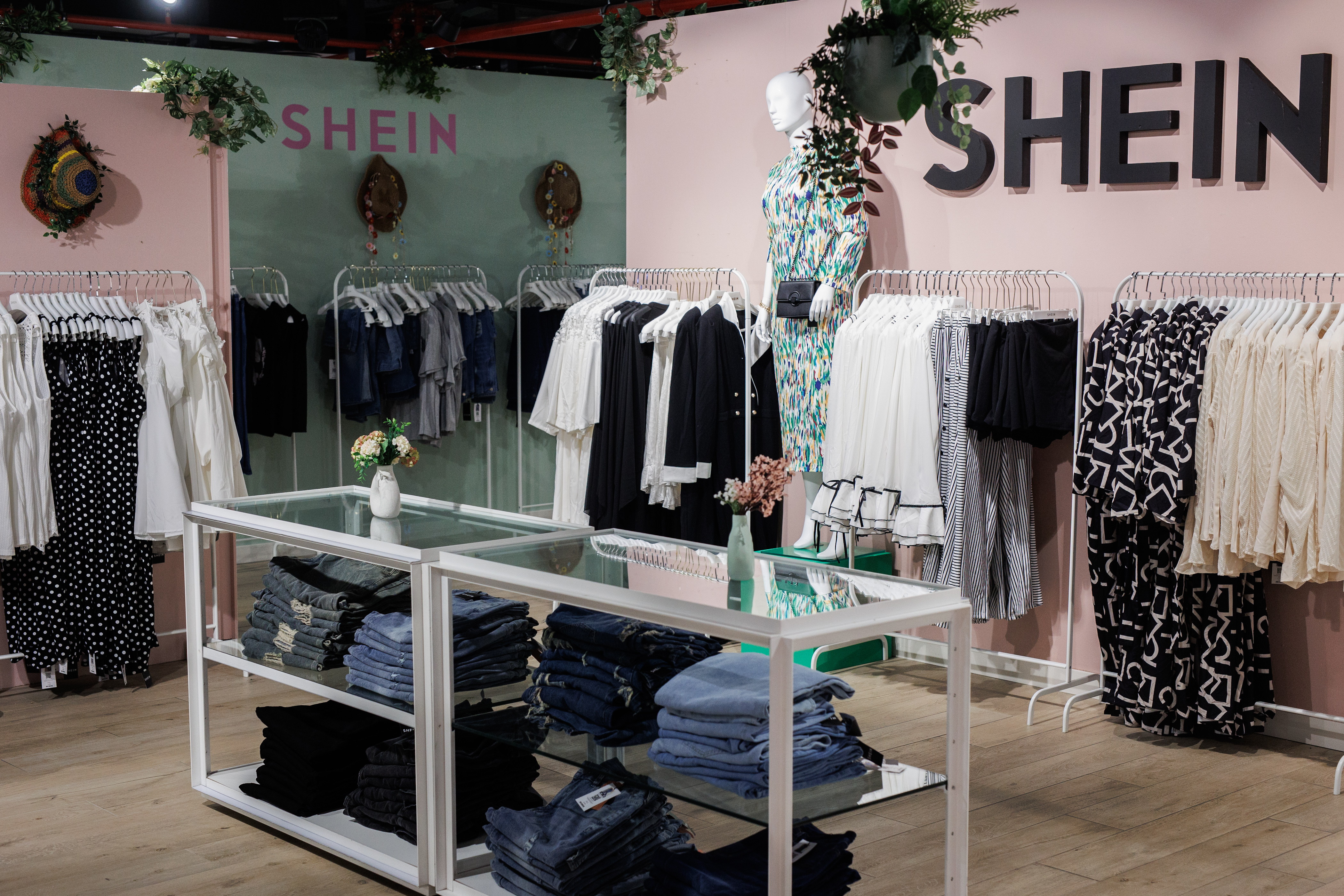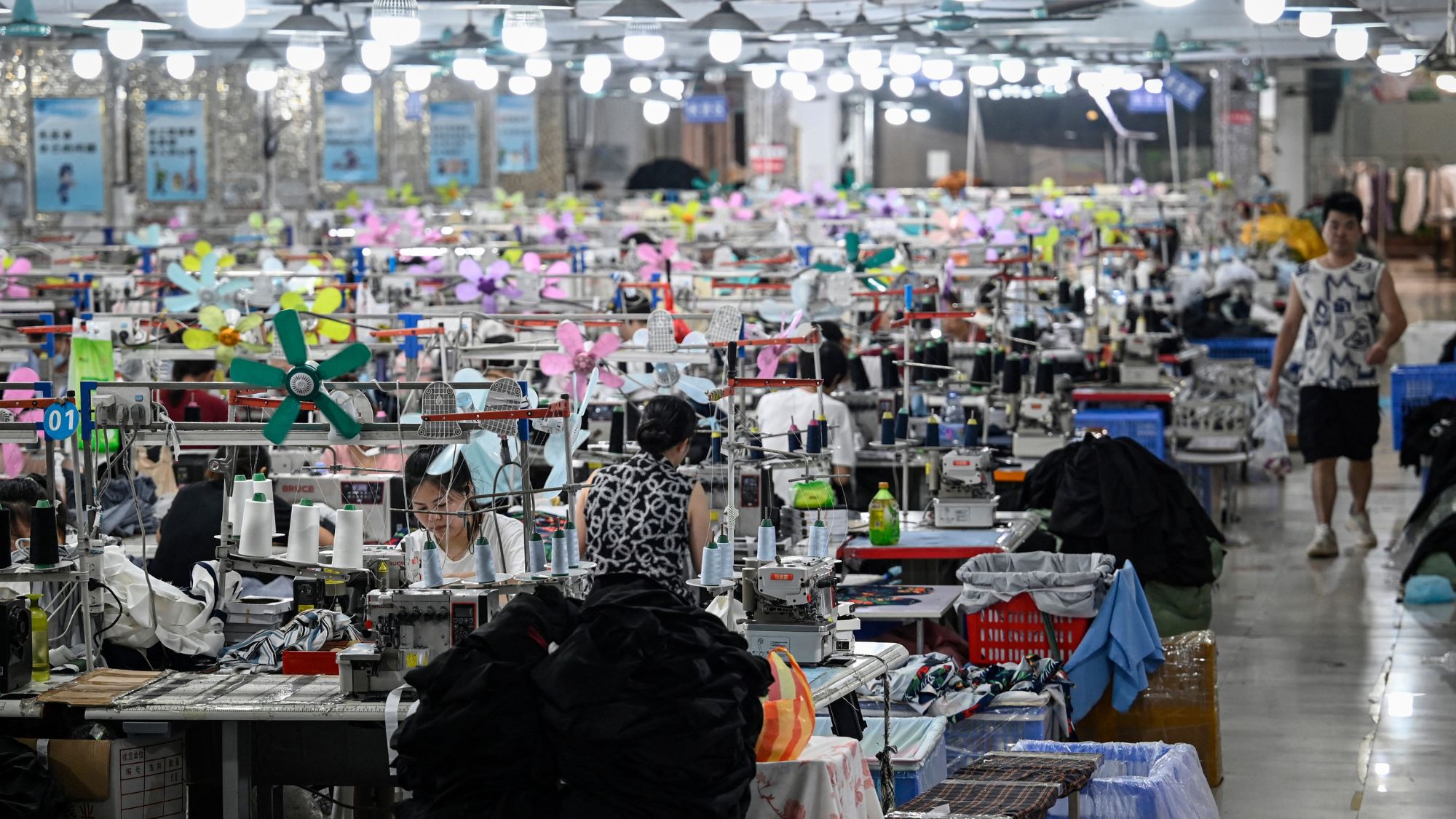Shein announces a €250 million circularity fund, as the ultra-fast fashion giant inches closer to UK Stock Exchange listing
Why Shein is love-bombing the UK


Billion dollar valuations, financial governance and duty exemptions are not typically the stuff of summer’s hottest fashion story. But a standoff between the stock market and Shein has broken all the rules.
It begins as spring turns into summer when Shein-watchers like myself started receiving strange tip offs about the famously reclusive brand. For example the rarely seen CEO had flown in for meetings with senior politicians. The Chinese-origin company launched a flurry of environmentally themed interventions. A tech-entrepreneur friend tipped me off that Shein’s head of strategic communications would speak at London Tech Week. Something was clearly going down.
The financial media broke the story: Shein had applied to list on the London Stock Exchange. To many of us this was a shock. Shein has already tried this in the US. However a New York flotation was essentially blocked last year when US lawmakers and regulators raised big concerns over labour rights in Shein’s supply chain, among other issues.
And now here they were, pitching up in our town. As a longterm tracker of the environmental and human cost of fashion, Shein stats make my palms sweat. Originally a Chinese business She Inside, it grew during the pandemic to become one of the most significant businesses on Earth. Last valued at £50 billion, about the same as the GDP of Costa Rica, it is estimated that floating shares in London could rake in another £4 billion to £8 billion.
Shein platforms 600,000 items at any one time, releasing 6000 ‘fresh’ pieces every day. Previously the quickest brand in fashion was Zara, but with only 10,000 new products a year it now looks quaintly restrained. The average price of a Shein buy is £7.90. We are now in a new era; while Zara, H&M and co were fast fashion, this is ultra-fast.

As the climate and nature crisis intensifies, I would argue that Shein’s business model takes us in the opposite direction. After all, speed and volume equals impact on the natural world. What we need to do is stop. Humanity already produces around 120 billion new garments every year. Over half of these are now produced from fossil fuel derived fibres, namely polyester. After all there’s enough existing fashion circulating to clothe the next six generations.
Shein denies its ‘success’ comes at a cost. Instead it claims it has created a kind of magic, including proprietary algorithms, data tracking trends and small order, quick response which drives down prices. But when its model and supply chain have been properly interrogated, many of the Shein claims fall away. In 2021 the Swiss NGO Public Eye discovered a number of serious violations of China’s labour laws, including garment workers pulling 75 hour shifts working in Shein’s main production base, a network of thousands of small factories in Guangzhou, China. A Channel 4 documentary Untold: Inside the Shein Machine found workers paid as little as 4 cents per garments and working 18-hour shifts.
Marie Claire Newsletter
Celebrity news, beauty, fashion advice, and fascinating features, delivered straight to your inbox!
Many have pointed out that by shipping straight from China to consumer, Shein items avoid tax. According to NGO Stand.earth in 2023 Shein produced more emissions than the entire country of Paraguay. Alarmingly these emissions had risen by 50% over the course of a year, despite Shein announcing plans to reduce emissions.
Indeed there is often a disparity between what Shein says it will do, and what actually happens. This is something the regulators of the London Stock Market need to consider. Shein’s charm offensive in the UK looks a bit like the toxic practice of love bombing. The most eye catching carrot waggled so far has to be the promise of a EURO 250 million fund to promote circularity in the UK and Europe. But the truth is humanity is consuming more virgin materials than ever, this money won’t touch the sides. According to research by the Ellen McArthur Foundation, every SECOND, the equivalent of one truckload of clothes is burnt or buried in a landfill. The best way to tackle this emergency is to stop dropping 6000 new looks every week. Circular funds like this one instead focus on changing the materials or improving recycling. They can also offer a useful distraction from systemic issues.
Those issues are unlikely to evaporate. In July, the US Senator Marco Rubio wrote to the UK government urging it to investigate Shein’s supply chain for enforced labour. This largely centres around the use of cotton and other products from Xinjiang a predominantly Muslin Uyghur part of China. Many civil rights groups allege that Uyghur people are forced to pick and process cotton and are subjected to ‘horrific abuses’. While Shein denies the cotton is in its supply chain, supply chain experts have warned that it impossible to certify a clean supply chain from this region.

All summer the resistance to the London listing has gathered pace among sustainable fashion influencers. It culminated with a popular petition to block the London listing when Venetia Lamana and Grace Blakeley, respectively sustainable fashion and economics and politics influencers launched a viral campaign, Say No To Shein. That a stock market story has bled into fashion discourse represents a beam of hope to me. We’re not just dumb consumers after all.
On stage at the London Tech Conference, Peter Pernot-Day, Shein’s Global Head of Strategic Communications seemed untroubled. He leaned into the narrative of Shein as a force for good, determinedly moving Shein across the line in his narrative from problem to solution. No questions were permitted and the audience sat quietly. Were they buying? It was hard to tell.
Afterwards I approached Mr Pernot as he left the stage. He smiled. ‘Do you have any update on the listing in London?’ I asked cheerily. The smile vanished. ‘That’s none of your business,’ his PR lady snapped. They made a hasty exit. Shein has left the building, but only for now.

Lucy Siegle has been described as the UK’s ‘green queen’. For nearly two decades on Prime-time TV and for major media brands she has championed ecological issues and sustainability making them relatable and relevant to all audiences.
She is author of five books including Turning the Tide on Plastic: How Humanity (and you) Can Make Our Globe Clean Again (Orion). But it was her 2011 expose of the human and ecological cost of the fashion industry, To Die For: Is Fashion Wearing out the World? (Harper Collins 2011, nominated for the Orwell prize) that helped to popularise terms such as ‘fast fashion’ and spearheaded the sustainable fashion movement. In 2015 To Die For was used as the basis for The True Cost, the Netflix hit documentary on global development and the fashion supply chain. Lucy produced
and stars in the film. Since then she has spoken on fashion and textiles across the globe from Sydney to Tulca, Romania and in Bangladesh. Lucy co-founded the Green
Carpet Challenge with Livia Firth, working with designers from Armani to Stella McCartney and A-list talent.
Since 2017 Lucy has worked on climate advocacy with the British musician and UN environment ambassador, Ellie Goulding. Lucy is a trustee for Surfers Against Sewage and an ambassador for WWF UK and The Circle.
-
 Prince Harry's "proud" words about wife Meghan Markle are going viral
Prince Harry's "proud" words about wife Meghan Markle are going viralBy Jenny Proudfoot
-
 Sources have opened up about Timothée Chalamet and Kylie Jenner's "intense" start to the year
Sources have opened up about Timothée Chalamet and Kylie Jenner's "intense" start to the yearBy Jenny Proudfoot
-
 Two Hollywood actresses were offered the role of Carrie Bradshaw before Sarah Jessica Parker
Two Hollywood actresses were offered the role of Carrie Bradshaw before Sarah Jessica ParkerBy Jenny Proudfoot